How To Upload A Blog On Google
If you want to create a machine learning model but say you don't have a computer that can take the workload, Google Colab is the platform for you. Even if you have a GPU or a good computer creating a local environment with anaconda and installing packages and resolving installation issues are a hassle.
Colaboratory is a free Jupyter notebook environment provided by Google where you can use free GPUs and TPUs which can solve all these issues.
Getting Started
To start working with Colab you first need to log in to your google account, then go to this link https://colab.research.google.com.
Attention reader! Don't stop learning now. Get hold of all the important Machine Learning Concepts with theMachine Learning Foundation Course at a student-friendly price and become industry ready.
Opening Jupyter Notebook:
On opening the website you will see a pop-up containing following tabs –
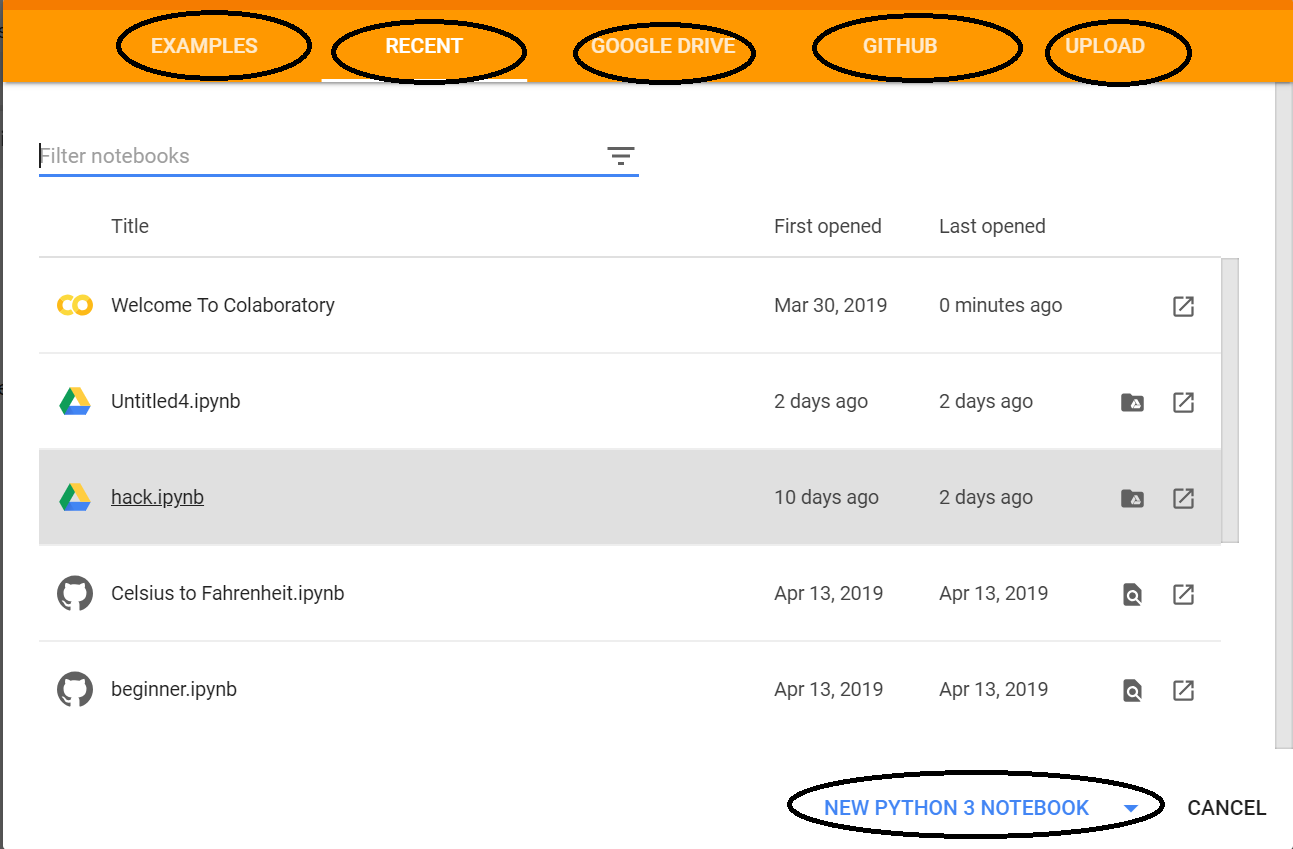
EXAMPLES: Contain a number of Jupyter notebooks of various examples.
RECENT: Jupyter notebook you have recently worked with.
GOOGLE DRIVE: Jupyter notebook in your google drive.
GITHUB: You can add Jupyter notebook from your GitHub but you first need to connect Colab with GitHub.
UPLOAD: Upload from your local directory.
Else you can create a new Jupyter notebook by clicking New Python3 Notebook or New Python2 Notebook at the bottom right corner.
Notebook's Description:
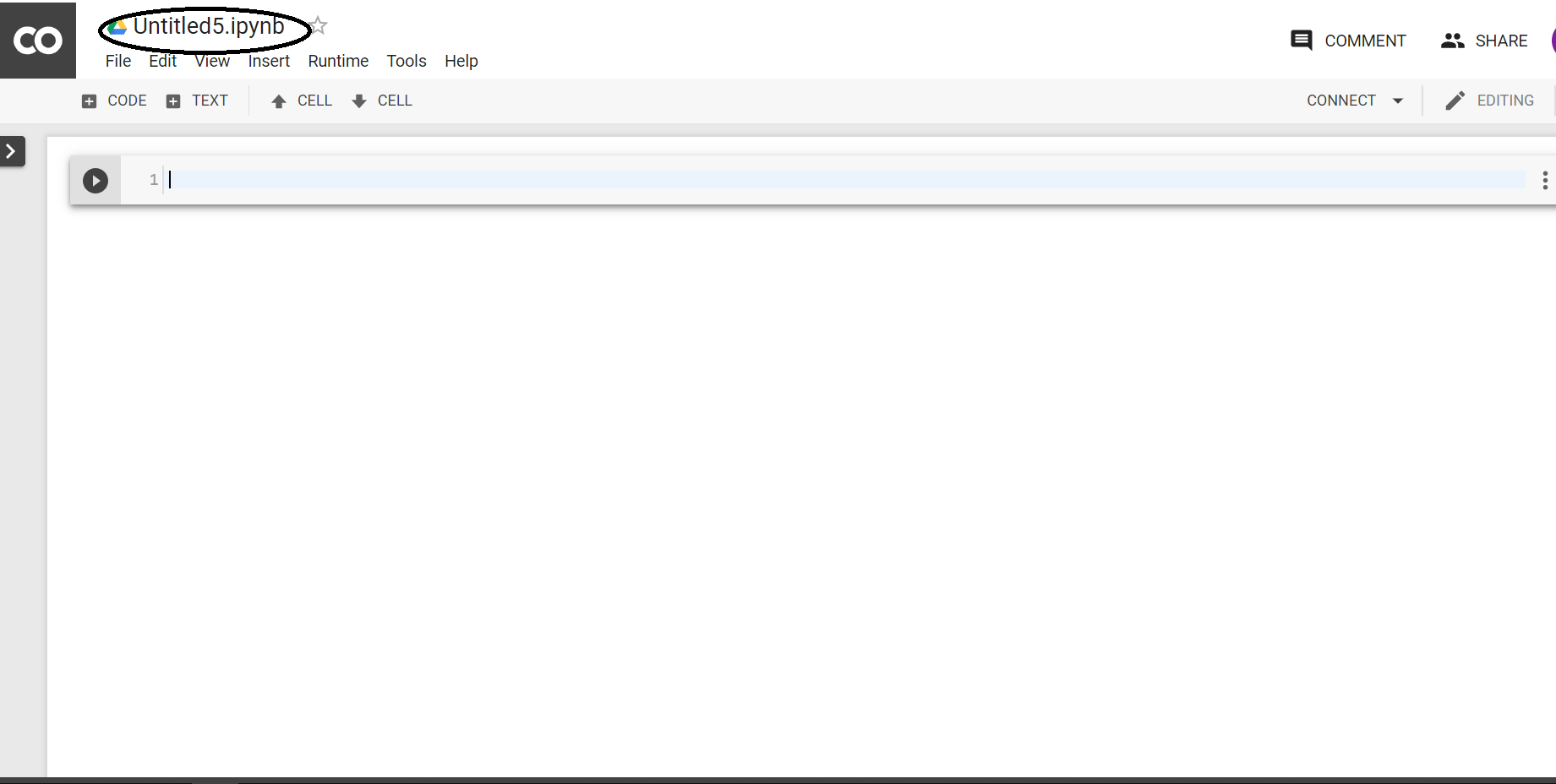
On creating a new notebook, it will create a Jupyter notebook with Untitled0.ipynb and save it to your google drive in a folder named Colab Notebooks. Now as it is essentially a Jupyter notebook, all commands of Jupyter notebooks will work here. Though, you can refer the details in Getting started with Jupyter Notebook.
Let's talk about what different here.
Change Runtime Environment:
Click the "Runtime" dropdown menu. Select "Change runtime type". Select python2 or 3 from "Runtime type" dropdown menu.

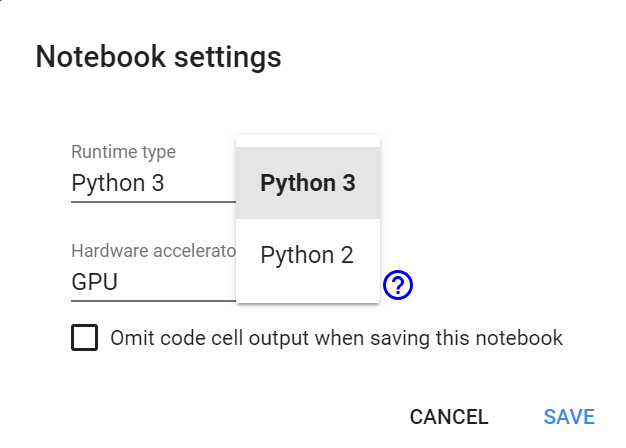
Use GPU and TPU:
Click the "Runtime" dropdown menu. Select "Change runtime type". Now select anything(GPU, CPU, None) you want in the "Hardware accelerator" dropdown menu.


Verify GPU:
import tensorflow as tf
tf.test.gpu_device_name()
If gpu is connected it will output following –
'/device:GPU:0'
Otherwise, it will output following
''
Verify TPU:
import os
if 'COLAB_TPU_ADDR' not in os.environ:
print ( 'Not connected to TPU' )
else :
print ( "Connected to TPU" )
If gpu is connected it will output following
Connected to TPU
Otherwise, it will output following
Not connected to TPU
Install Python packages –
Use can use pip to install any package. For example:
Clone GitHub repos:
Use git clone command. For example:
! git clone https: / / github.com / souvik3333 / Testing - and - Debugging - Tools
Upload File:
from google.colab import files
uploaded = files.upload()
Select "Choose file" and upload the file you want. Enable third-party cookies if they are disabled.

Then you can save it in a dataframe.
import io
df2 = pd.read_csv(io.BytesIO(uploaded[ 'file_name.csv' ]))
Upload File By Mounting Google Drive:
To mount your drive inside "mntDrive" folder execute following –
from google.colab import drive
drive.mount( '/mntDrive' )
Then you'll see a link, click on link, then allow access, copy the code that pops up, paste it at "Enter your authorization code:".
Now to see all data in your google drive you need to execute following:
! ls "/mntDrive/My Drive"
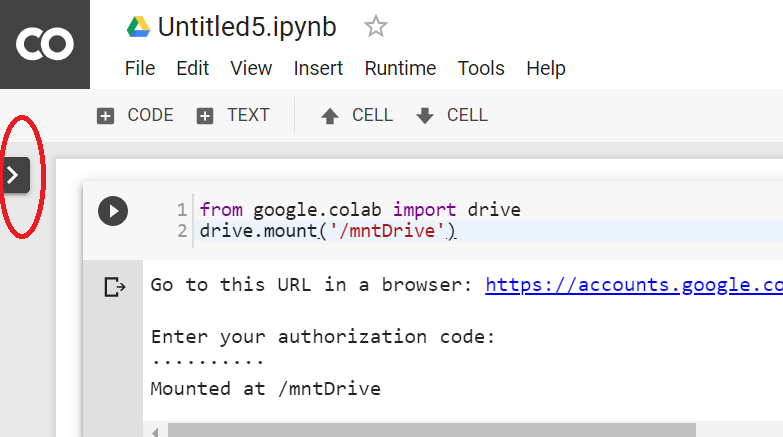
File Hierarchy:
You can also see file hierarchy by clicking ">" at top left below the control buttons (CODE, TEXT, CELL).

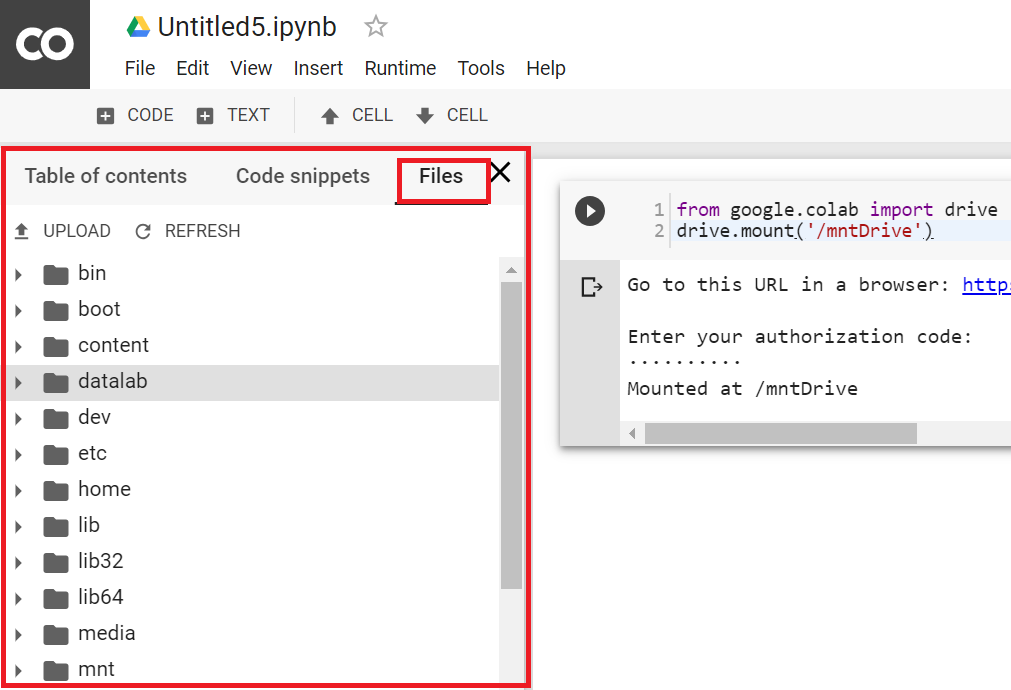
Download Files:
Let's say you want to download "file_name.csv". You can copy the file to your google drive (In "data" folder, you need to create the "data" folder in google drive) by executing this:
cp file_name.csv "/mntDrive/My Drive/data/renamed_file_name.csv"
The file will be saved at "data" folder with "renamed_file_name.csv" name. Now you can directly download from there, Or, you can just open file hierarchy and right clicking will give download option.
Download Jupyter Notebook:
Click "File" dropdown menu at top left corner. Choose "download .ipynb" or "download .py"
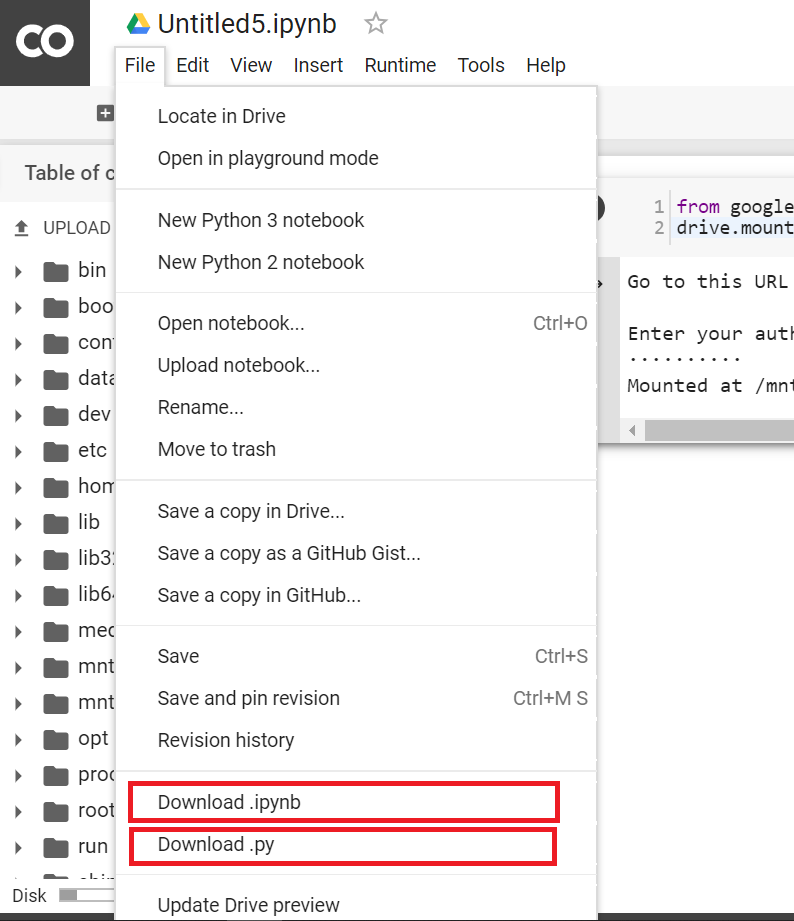
Share Jupyter Notebook:
You can share your notebook by adding others email address or by creating a shareable link.


How To Upload A Blog On Google
Source: https://www.geeksforgeeks.org/how-to-use-google-colab/
Posted by: silvasessood.blogspot.com


0 Response to "How To Upload A Blog On Google"
Post a Comment